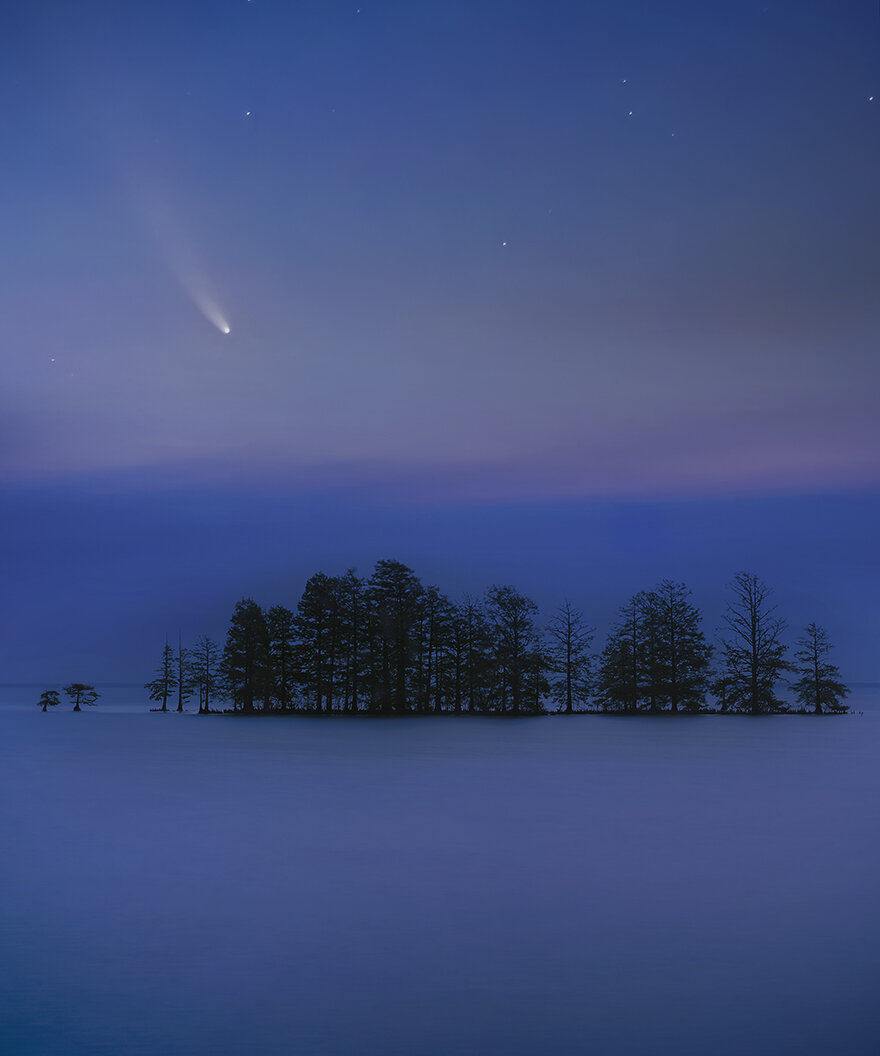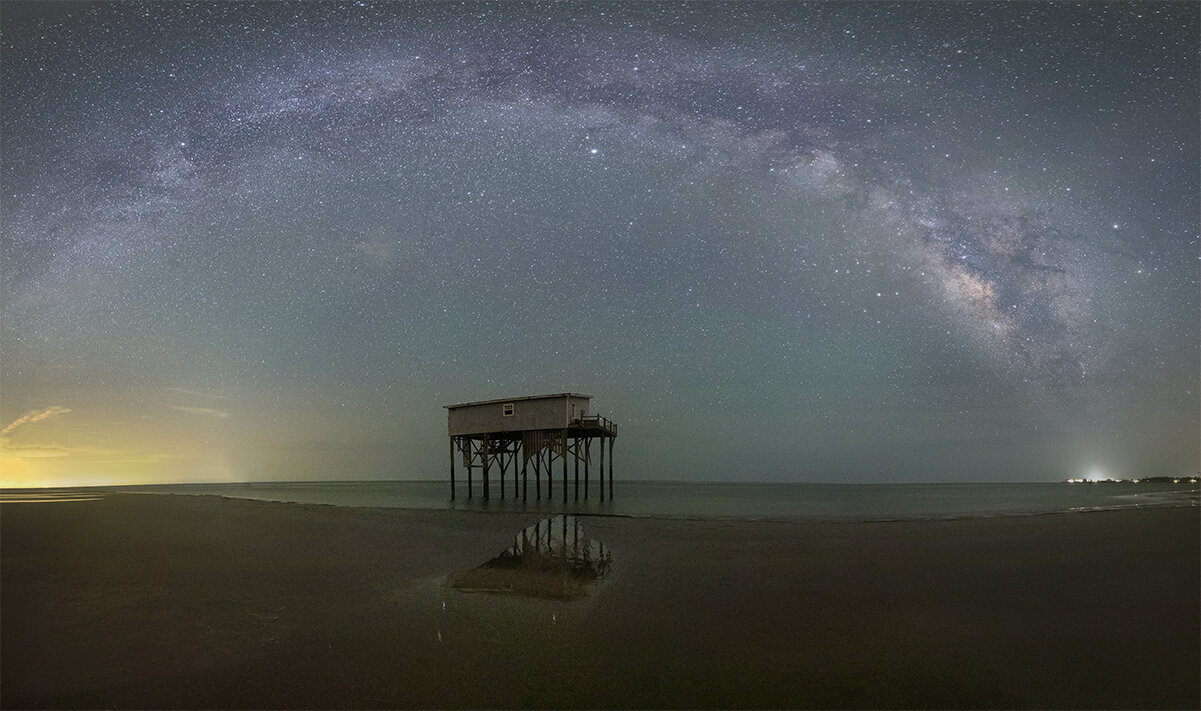A CELESTIAL VISITOR (2020) < Previous | Next >
I remember seeing Hale Bopp as a fuzzy blob in the night sky back in 1997 while travelling through the rural countryside onboard a train. I had never seen anything like that and it was only later that I realized in science class that I had spied a long period comet, one that would never return in my lifetime. It was a thrilling experience during my formative years and cemented my love and curiosity for the exploration of the cosmos.
The years followed and one after the other, several potential celestial visitors did not get bright enough for viewers in the Northern Hemisphere (Can I also say - people in the Southern Hemisphere seem to have great luck with these - what gives?). There was Comet ISON in 2014, which was hyped to be the comet of the century but was only visible with great difficulty using optical instruments. It was followed by others, Comet SWAN, Comet ATLAS, Comet Lovejoy and so on. Each time, I would get excited at the prospect of capturing a glimpse of these celestial visitors from unimaginable distances in person, only to have the hopes dashed. Then came NEOWISE (named after the observing instrument that discovered its existence).
I only learned of this Comet in the news after it had passed Perihelion and had survived its close encounter with the Sun. Saw a picture or two of it from out West and it seemed to be a real beauty with a definite possibility at visibility to the unaided eye. That ofcourse brings us to the next big variable in the equation - Weather! North Carolina is blessed with lush green landscapes and plentiful trees - that does mean that there are often days where banks of clouds will just sit overhead making astrophotography nigh near impossible. Maddeningly some of the forecasts were always calling for too many clouds at around dawn (when this shot was taken) with clouds clearing later. The locations with clearer skies were too far out for me to drive on a workday. On this day however I decided to test both those hypothesis - Drove to a location about 3 hours away from home on a weeknight with chance of a clearing in the general direction of the cometrise. My heart sank when I saw the low bank of clouds at the horizon but I figured I’d capture some shots anyways before heading back home.
This bank of Cypress trees out on lake Mattamuskeet is very well known to photographers in North Carolina. I had this composition in mind and with that, I setup in an area away from the general viewing area that looks out over this landscape (I disturbed quite a few night creatures in the process - Thank heavens for Gaiters). Using a 50mm lens, I captured the trees and the moving clouds. I was almost getting ready to head out when on my last frame, I caught sight of the Comet’s tail rising out from behind the clouds. The shot of the comet was taken with a much higher focal length to exaggerate its size overall for a bit of artistic effect. The two frames were then blended in post processing to render my encounter with this Celestial Visitor. Needless to say, that was a long day at work but my excitement at seeing the results kept me going through it!
If you haven’t had a chance to view the Comet in person yet, there’s still a possibility for us dwellers in the Northern Hemisphere. NEOWISE is making its closest pass to Earth on July 22nd and is now visible at a more palatable time about 40 minutes or so after sunset, for about two hours (Northern Latitudes have a much bigger viewing window). Although not as bright, it can still be viewed with binoculars in a North Westerly direction. So head out there as far away from city lights as possible and grab a view of it - it won’t be back our way for almost another 7000 years! Happy gazing!
Thank you for your support!



